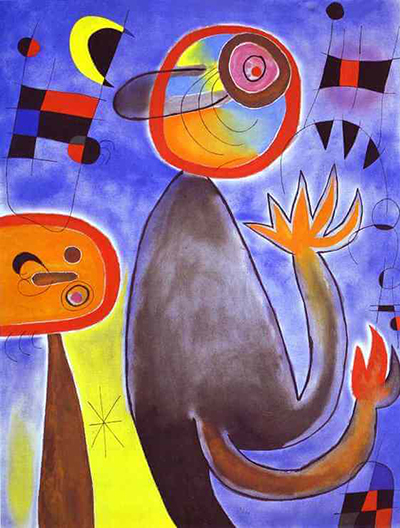This artwork is from 1953, by which artist Miro had established a strong reputation and was financially secure as he looked to continue to develop his path to abstraction.
All of the trademark abstract elements of Miro can be found here - from the simplistic figures, produced from circles and curved squares, to the matrix of lines and colours which sit in the far background. Again, we see similarities with Kandinsky's Color Study: Squares with Concentric Circles from 1913. Both artists used simple colour schemes within their more abstract work and created form using the most basic of shapes. The reality that they were depicting would have been firmly lodged in their own minds, but we would be left trying to decipher it all ourselves. Miro did vary his abstract paintings in the amount of the canvas that was filled with content, which you can see if you compare this busy artwork with Dog Barking at the Moon, for example.
Miro was interested in the universe itself, and many of his abstract paintings bear more than a resemblance to planets, stars and similar. Indeed, he did purposely use them from time to time and with his own style during this period, it can sometimes be hard to tell the difference between whether he was doing so or not. The matrix grid which are found either side of the main figures are essentially an abstract form of ladder, which he used many times in different paintings and essentially offer us a route to heaven. The claw like hands appear to be reaching out towards these ladders, hoping to make the climb. The hands themselves are drawn in a way which almost merges humanity and the animal kingdom, perhaps attempting to reduce the figure to the most basic level possible. The other figure is shorter, and perhaps just watched on in interest, as a supporting character to the overall composition.




